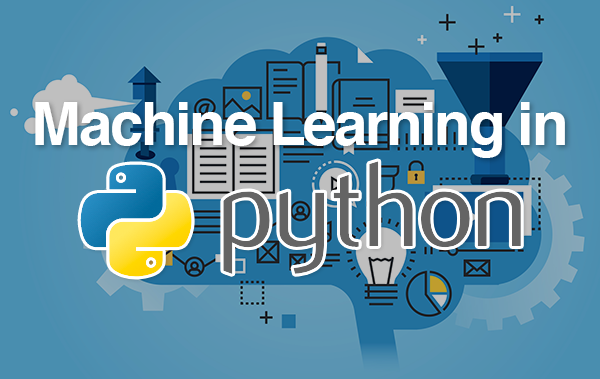Plot The Learning Curve
Preliminaries
/* Load libraries */
import numpy as np
import matplotlib.pyplot as plt
from sklearn.ensemble import RandomForestClassifier
from sklearn.datasets import load_digits
from sklearn.model_selection import learning_curveLoad Digits Dataset
/* Load data */
digits = load_digits()
/* Create feature matrix and target vector */
X, y = digits.data, digits.targetPlot Learning Curve
/* Create CV training and test scores for various training set sizes */
train_sizes, train_scores, test_scores = learning_curve(RandomForestClassifier(),
X,
y,
# Number of folds in cross-validation
cv=10,
# Evaluation metric
scoring='accuracy',
# Use all computer cores
n_jobs=-1,
# 50 different sizes of the training set
train_sizes=np.linspace(0.01, 1.0, 50))
/* Create means and standard deviations of training set scores */
train_mean = np.mean(train_scores, axis=1)
train_std = np.std(train_scores, axis=1)
/* Create means and standard deviations of test set scores */
test_mean = np.mean(test_scores, axis=1)
test_std = np.std(test_scores, axis=1)
/* Draw lines */
plt.plot(train_sizes, train_mean, '--', color="#111111", label="Training score")
plt.plot(train_sizes, test_mean, color="#111111", label="Cross-validation score")
/* Draw bands */
plt.fill_between(train_sizes, train_mean - train_std, train_mean + train_std, color="#DDDDDD")
plt.fill_between(train_sizes, test_mean - test_std, test_mean + test_std, color="#DDDDDD")
/* Create plot */
plt.title("Learning Curve")
plt.xlabel("Training Set Size"), plt.ylabel("Accuracy Score"), plt.legend(loc="best")
plt.tight_layout()
plt.show()
Python Example for Beginners
Two Machine Learning Fields
There are two sides to machine learning:
- Practical Machine Learning:This is about querying databases, cleaning data, writing scripts to transform data and gluing algorithm and libraries together and writing custom code to squeeze reliable answers from data to satisfy difficult and ill defined questions. It’s the mess of reality.
- Theoretical Machine Learning: This is about math and abstraction and idealized scenarios and limits and beauty and informing what is possible. It is a whole lot neater and cleaner and removed from the mess of reality.
Data Science Resources: Data Science Recipes and Applied Machine Learning Recipes
Introduction to Applied Machine Learning & Data Science for Beginners, Business Analysts, Students, Researchers and Freelancers with Python & R Codes @ Western Australian Center for Applied Machine Learning & Data Science (WACAMLDS) !!!
Latest end-to-end Learn by Coding Recipes in Project-Based Learning:
Applied Statistics with R for Beginners and Business Professionals
Data Science and Machine Learning Projects in Python: Tabular Data Analytics
Data Science and Machine Learning Projects in R: Tabular Data Analytics
Python Machine Learning & Data Science Recipes: Learn by Coding
R Machine Learning & Data Science Recipes: Learn by Coding
Comparing Different Machine Learning Algorithms in Python for Classification (FREE)
Disclaimer: The information and code presented within this recipe/tutorial is only for educational and coaching purposes for beginners and developers. Anyone can practice and apply the recipe/tutorial presented here, but the reader is taking full responsibility for his/her actions. The author (content curator) of this recipe (code / program) has made every effort to ensure the accuracy of the information was correct at time of publication. The author (content curator) does not assume and hereby disclaims any liability to any party for any loss, damage, or disruption caused by errors or omissions, whether such errors or omissions result from accident, negligence, or any other cause. The information presented here could also be found in public knowledge domains.
Google –> SETScholars
A list of Python, R and SQL Codes for Applied Machine Learning and Data Science at https://setscholars.net/Learn by Coding Categories:
- Classification: https://setscholars.net/category/classification/
- Data Analytics: https://setscholars.net/category/data-analytics/
- Data Science: https://setscholars.net/category/data-science/
- Data Visualisation: https://setscholars.net/category/data-visualisation/
- Machine Learning Recipe: https://setscholars.net/category/machine-learning-recipe/
- Pandas: https://setscholars.net/category/pandas/
- Python: https://setscholars.net/category/python/
- SKLEARN: https://setscholars.net/category/sklearn/
- Supervised Learning: https://setscholars.net/category/supervised-learning/
- Tabular Data Analytics: https://setscholars.net/category/tabular-data-analytics/
- End-to-End Data Science Recipes: https://setscholars.net/category/a-star-data-science-recipe/
- Applied Statistics: https://setscholars.net/category/applied-statistics/
- Bagging Ensemble: https://setscholars.net/category/bagging-ensemble/
- Boosting Ensemble: https://setscholars.net/category/boosting-ensemble/
- CatBoost: https://setscholars.net/category/catboost/
- Clustering: https://setscholars.net/category/clustering/
- Data Analytics: https://setscholars.net/category/data-analytics/
- Data Science: https://setscholars.net/category/data-science/
- Data Visualisation: https://setscholars.net/category/data-visualisation/
- Decision Tree: https://setscholars.net/category/decision-tree/
- LightGBM: https://setscholars.net/category/lightgbm/
- Machine Learning Recipe: https://setscholars.net/category/machine-learning-recipe/
- Multi-Class Classification: https://setscholars.net/category/multi-class-classification/
- Neural Networks: https://setscholars.net/category/neural-networks/
- Python Machine Learning: https://setscholars.net/category/python-machine-learning/
- Python Machine Learning Crash Course: https://setscholars.net/category/python-machine-learning-crash-course/
- R Classification: https://setscholars.net/category/r-classification/
- R for Beginners: https://setscholars.net/category/r-for-beginners/
- R for Business Analytics: https://setscholars.net/category/r-for-business-analytics/
- R for Data Science: https://setscholars.net/category/r-for-data-science/
- R for Data Visualisation: https://setscholars.net/category/r-for-data-visualisation/
- R for Excel Users: https://setscholars.net/category/r-for-excel-users/
- R Machine Learning: https://setscholars.net/category/r-machine-learning/
- R Machine Learning Crash Course: https://setscholars.net/category/r-machine-learning-crash-course/
- R Regression: https://setscholars.net/category/r-regression/
- Regression: https://setscholars.net/category/regression/
- XGBOOST: https://setscholars.net/category/xgboost/
- Excel examples for beginners: https://setscholars.net/category/excel-examples-for-beginners/
- C Programming tutorials & examples: https://setscholars.net/category/c-programming-tutorials/
- Javascript tutorials & examples: https://setscholars.net/category/javascript-tutorials-and-examples/
- Python tutorials & examples: https://setscholars.net/category/python-tutorials/
- R tutorials & examples: https://setscholars.net/category/r-for-beginners/
- SQL tutorials & examples: https://setscholars.net/category/sql-tutorials-for-business-analyst/
- Year 1 Mathematics Worksheet: https://setscholars.net/category/year-1-mathematics-worksheet/

